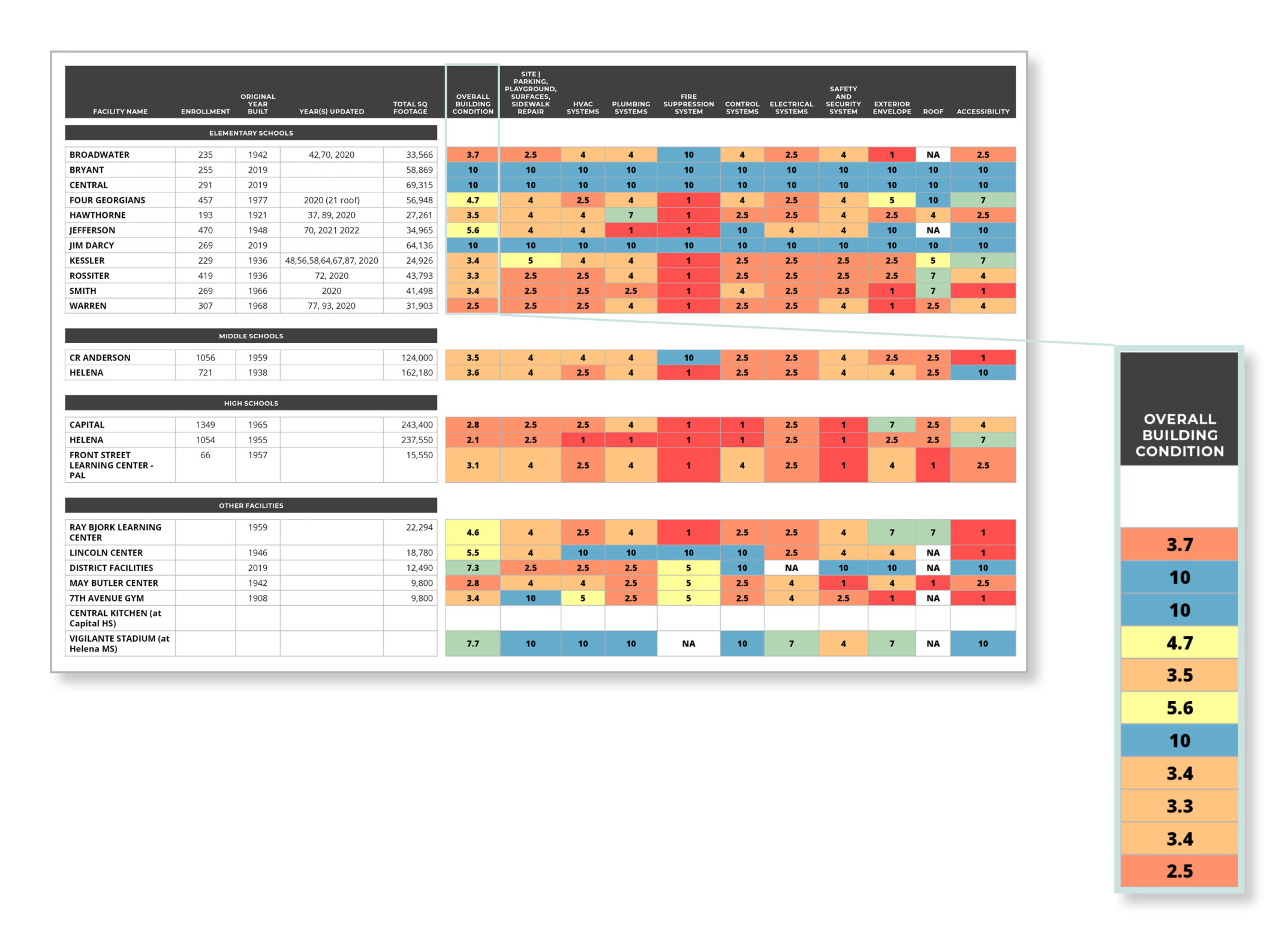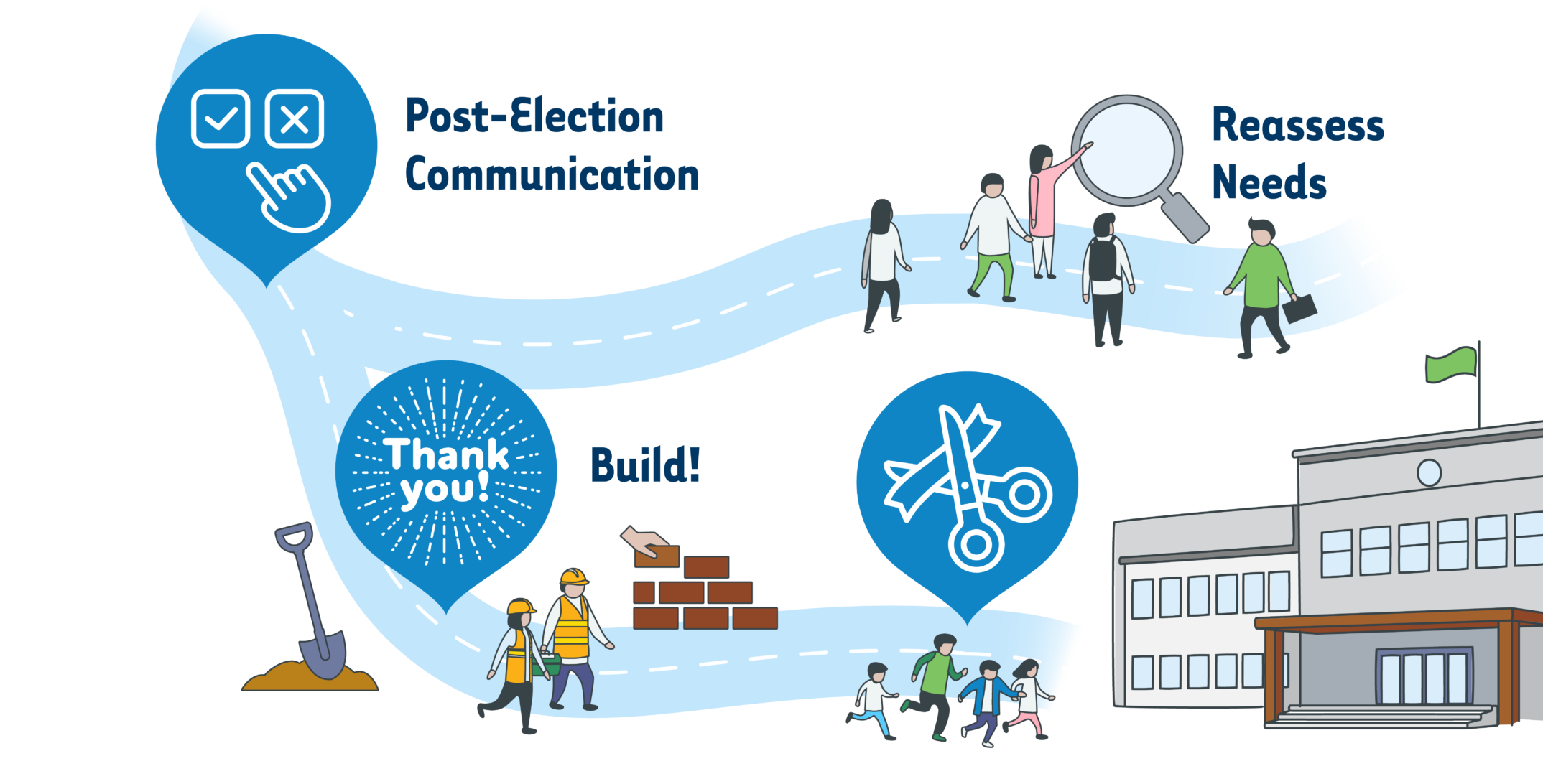A Roadmap to Success: PK-12 Bond Planning
Across the nation, school districts are navigating a challenging landscape of declining enrollment, shifting community expectations, and increasing difficulty in passing capital bond measures. While the need for quality learning environments remains constant, the path to securing funding has grown more complex due to these shifts. Defining and communicating capital facility needs in this environment requires a transparent process based on measurable criteria. School boards and administrators face understandable public scrutiny and funding constraints that demand a careful balance of technical rigor, fiscal responsibility, and community trust. Establishing a clear, data-informed roadmap from needs assessment through post-election communication is critical—not only for achieving voter support, but for sustaining long-term confidence in district leadership.

Assessing Need: From Intuition to Fact
Every capital bond effort begins with a sense of pressure that translates to a need for change, including such factors as schools that feel overcrowded, aging facilities, and evolving educational programs. A comprehensive needs assessment transforms that intuition into credible evidence through demographic and enrollment studies, facility condition and functional assessments, and analysis of capacity. Needs assessment includes factors like educational and operational appropriateness of existing building spaces, and site elements such as parking and traffic circulation, playfield configuration, and pedestrian safety. The goal is to translate this information into a clear, actionable definition of need. When quantitative data aligns with community experience, the district gains the credibility necessary to advance toward funding discussions with both the public and the school board.
We often use graphic matrices to color-code various factors that speak to need. This includes things like building condition, number of portables, security issues, traffic circulation challenges, and educational adequacy. We would commonly color-code shades of red to indicate higher need and shades of green indicate where needs are met. These graphics call attention to problem areas very quickly, acting as a heat map for District committees determining priorities for a bond program.


Determining the Funding Framework
Districts must understand and strategically combine available funding sources, including state assistance funds for eligible projects, and local bond capacity based on assessed property values and existing debt payoff schedules. Early collaboration with bond providers helps ensure that financial modeling and timing align with project priorities. Districts should involve bond counsel early so that financial structure evolves alongside the facility strategy. In addition to bonds and state programs, some districts pursue supplemental grants, partnerships, or private donations. Creative strategies—from energy-efficiency incentives to local philanthropic support—can help to fill funding gaps and demonstrate resourcefulness to voters. A well-structured funding framework provides not only a financial plan, but also a foundation for public trust.
Beyond the Bond: Recently, our principal Melissa McFadgen did a deep dive into some of the alternate ways school districts are exploring to fund their facility needs: "Beyond the bond: Creative ways schools are financing capital improvements", Seattle Daily Journal of Commerce, Back to School Special Section, Sept. 25, 2025. Click here to read article

Engaging the School Community
Public engagement is not a single event, but an ongoing integrated process that shapes both the plan and its public perception. Successful districts cultivate layered engagement strategies involving committees of parents, teachers, and community members who explore needs and solutions together, along with surveys, digital feedback tools, and open community meetings. Transparency through project websites, informational videos, and open houses can help the community stay informed and feel part of the process. It is important to gather public input prior to presenting solutions. The most effective engagement combines structured information with genuine opportunities for input, helping the community feel both informed and heard.
One effective mechanism we use is to start the community process with a public listening session. This is an event where we have information available on current conditions, but we avoid suggesting solutions. Instead, we are there to hear the community’s concerns as well as their hopes for school facilities. This input is visibly documented during the listening session. Then, at the start of each subsequent community meeting, we reiterate what we heard and describe how we are addressing each aspect. This approach demonstrates responsiveness to the community, which can go a long way in generating voter support.

Developing Preliminary Designs and Costs
As priorities are defined, preliminary design work provides a tangible vision for what can be achieved. Diagrammatic studies and conceptual drawings help illustrate scope and intent without suggesting that final design decisions have already been made. At this stage, cost modeling and schedule alignment become essential. Architects work with cost estimators to define realistic budgets that account for market conditions, escalation, and phasing strategies, including adequate contingencies to account for unforeseen conditions. The goal at this stage is to communicate enough design intent to give voters confidence in the concept, while ensuring that the district’s aspirations can be achieved within the budget.

Meeting Regulatory Requirements: Board Resolution and Legal Steps
Once analysis and planning align, the district must formalize its path to the ballot. This involves internal approvals, coordination with legal counsel and state oversight agencies, and careful drafting of ballot language that meets legal standards. The team sets the timeline for final decisions based on proactive awareness of critical submission election filing deadlines. Early alignment between the district, board, and bond counsel is critical. By the time the board votes to place the measure on the ballot, the planning groundwork must be complete.

Communicating During the Campaign
After a bond measure is approved for the ballot, the planning process shifts to a voter communication strategy. Effective materials may include fact sheets, project summaries, infographics, or short videos that explain facility conditions, proposed improvements, costs, and tax impacts in a clear and factual manner. Legal requirements dictate that public resources can be used only for informational purposes, not advocacy. Independent community or booster groups, operating separately from the district, can take on advocacy roles to encourage voter support. A coordinated approach ensures that messaging remains factual, stating accurate tax information and illustrating the educational and community benefits of the proposed projects.

After the Vote: Post-Election Communication
Regardless of the outcome, post-election communication is an essential part of ensuring community trust. For successful measures, districts should promptly thank voters, provide regular progress updates, and celebrate milestones such as groundbreaking and ribbon cutting. Demonstrating visible progress reinforces accountability and strengthens confidence in district leadership. For measures that do not pass, communicating lessons learned and outlining next steps can help rebuild support and inform future planning. In both cases, keeping a long-range facilities vision visible reminds the community that capital investment is an ongoing responsibility—a continuous cycle of stewardship and improvement.
Executing a successful capital facilities bond program is as much about process as it is about projects. By combining credible data, strategic funding, authentic engagement, and transparent communication, school districts can not only enhance their learning environments but also build lasting community relationships that endure far beyond a single election.
Click here to see our full PK-12 Bond Planning Roadmap.
